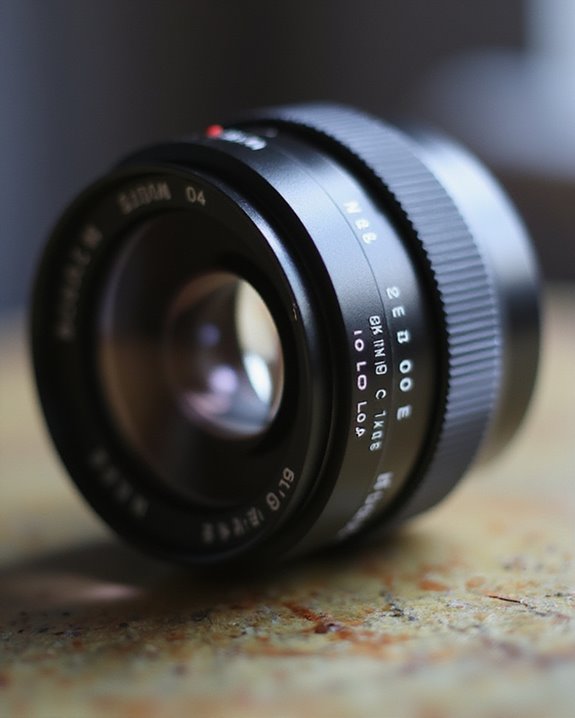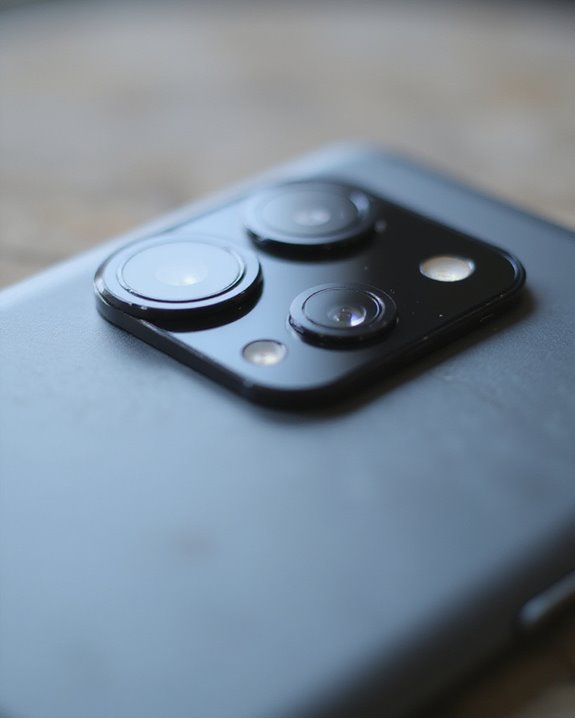The “mm” on a camera lens indicates its focal length, measured in millimeters from the optical center to the image sensor when focused at infinity. This number determines the field of view and magnification, with lower numbers (wide-angle lenses) capturing broader scenes and higher numbers (telephoto lenses) providing greater magnification of distant subjects. Focal length affects perspective, compression, and background blur, making it an essential factor when selecting a lens for specific photographic purposes. Understanding these properties enables photographers to achieve their desired visual effects.
Key Takeaways
- The “mm” refers to focal length, measuring the optical distance from the lens’s nodal point to the camera sensor when focused at infinity.
- Focal length determines a lens’s field of view—lower mm numbers (like 14mm) capture wider scenes while higher numbers (like 200mm) magnify distant subjects.
- A 50mm lens approximates human visual perspective, while wide-angle lenses (10-45mm) show more scene and telephoto lenses (60-800mm+) bring subjects closer.
- The mm measurement affects image characteristics including background blur, spatial compression, and perspective distortion in the final photograph.
- Manufacturers display the focal length (mm) on the lens barrel for identification and include it in lens names like “50mm f/1.8.”
The Basics: Defining Focal Length in Millimeters
The focal length, measured in millimeters (mm), represents one of the most fundamental specifications of a camera lens, determining how a lens captures the world around us. This measurement indicates the optical distance between the lens’s nodal point and the image sensor or film plane when focused at infinity, rather than the physical length of the lens itself. Throughout the Historical Evolution of photography, this standard has remained consistent, allowing photographers to reliably compare different lenses across brands and eras.
In Lens Optics, focal length is prominently displayed on the lens barrel for easy identification, with lenses commonly named after this specification, such as a “50mm lens.” The measurement is taken when the lens is focused at infinity to guarantee consistent results across varying shooting distances.
How Focal Length Affects Your Photography
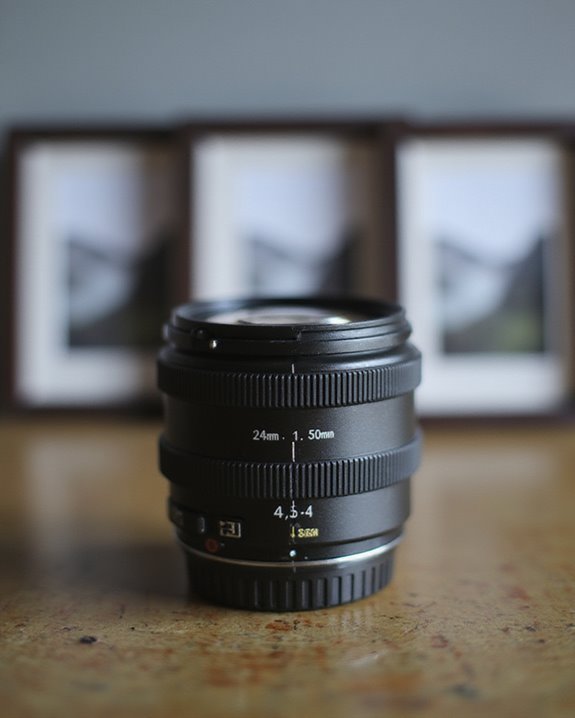
How does the choice of focal length transform an ordinary scene into a compelling photograph? Focal length greatly influences field of view, subject magnification, and spatial relationships within the frame. Longer focal lengths create Background Isolation by compressing perspective and narrowing the field of view, making subjects appear larger while blurring distracting elements. This compression effect visually brings distant objects closer together, flattening spatial relationships for unified compositions.
Conversely, shorter focal lengths enhance Foreground Enhancement through wider coverage and increased perceived depth. Wide-angle lenses exaggerate the distance between elements, making foreground objects appear larger relative to the background. This creates dynamic perspective that emphasizes spatial relationships and context. Photographers must consider how focal length affects not only what appears in frame but also how elements relate spatially, ultimately determining the visual story and emotional impact of their images.
Wide-Angle vs. Telephoto: Understanding the Spectrum

When photographers navigate the spectrum of camera lenses, they encounter two fundamentally different approaches to capturing reality: wide-angle and telephoto lenses. These lens types represent opposite ends of the focal length range, with wide-angles typically measuring 10-45mm and telephotos spanning 60-800mm. Wide-angle lenses provide expansive views with minimal distance compression, while telephoto lenses magnify distant subjects with significant compression effects. Portability issues become apparent when comparing these options, as wide-angles remain relatively compact and lightweight, whereas telephotos can be bulky and cumbersome during extended shooting sessions. Filter usage also presents distinct challenges, with wide-angle lenses often experiencing vignetting when filters are attached, a problem less common with telephoto variants. These differences in physical characteristics directly impact a photographer’s workflow and equipment selection process. Additionally, focal length range plays a crucial role in determining how a lens performs across various scenarios, influencing choices based on the intended subject and environment.
The “Normal” 50mm Lens and Why It Matters

Photographers often refer to the 50mm lens as the “normal” lens because its focal length closely approximates human visual perception, creating images that feel natural and familiar to viewers. This lens has significant historical significance in photography, having been the standard kit lens that accompanied many film cameras throughout the 20th century. The 50mm offers remarkable versatility across multiple photography styles, from portraits to landscapes, while maintaining a distortion-free perspective that many professionals value.
User feedback consistently highlights the 50mm’s balanced performance attributes: compact size for easy portability, wide aperture options for creative depth of field control, and exceptional image quality with impressive sharpness. These characteristics make it particularly effective for street photography and event documentation, where photographers need to capture authentic moments without drawing attention to their equipment.
Choosing the Right Focal Length for Different Photography Styles

Selecting an appropriate focal length stands as one of the most critical decisions in photography, directly influencing the visual storytelling, emotional impact, and technical execution of an image. For landscape photography, ultra-wide 14mm lenses create dramatic foreground emphasis, while standard 50mm lenses deliver natural perspective. Street photographers often prefer 28mm or 35mm focal lengths to capture environmental context and layered narratives. Portrait photographers typically select short telephoto lenses (85-135mm) for their flattering compression of facial features and pleasing background separation. Wildlife Lenses and Sports Options commonly demand telephoto ranges (200-600mm), allowing photographers to maintain safe distances while capturing distant subjects with clarity. Creative effects can be achieved through specialized options like fisheye lenses, which introduce intentional distortion for artistic expression. Additionally, understanding the focal length of your lens helps determine its suitability for different styles and scenarios, ensuring you capture images that align with your artistic vision.
Focal Length and Perspective Distortion Explained
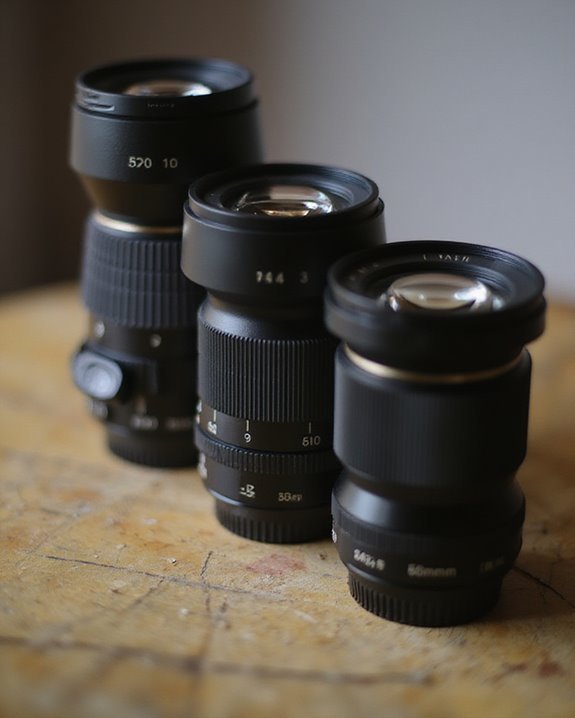
The relationship between focal length and perspective distortion represents one of photography’s most misunderstood concepts, often leading to confusion about how lenses actually affect image appearance. Contrary to popular belief, the Distortion Physics involved are primarily dependent on subject distance rather than focal length itself. When photographers move closer to subjects with wide-angle lenses, the angular differences between light rays increase, creating what appears to be distortion.
These Optical Illusions occur because rectilinear lenses don’t inherently distort objects; instead, proximity exaggerates size relationships between foreground and background elements. Telephoto lenses appear to “compress” space because they allow photographers to maintain framing from greater distances, minimizing angular differences. Understanding this fundamental principle clarifies why changing subject distance, not merely switching focal lengths, controls perspective distortion in photographic composition. Additionally, advanced ultra-wide lenses from 2025 incorporate distortion control elements that help mitigate edge curvature and vignetting, ensuring more natural and accurate representations.
Crop Factors: How Sensor Size Changes Effective Focal Length
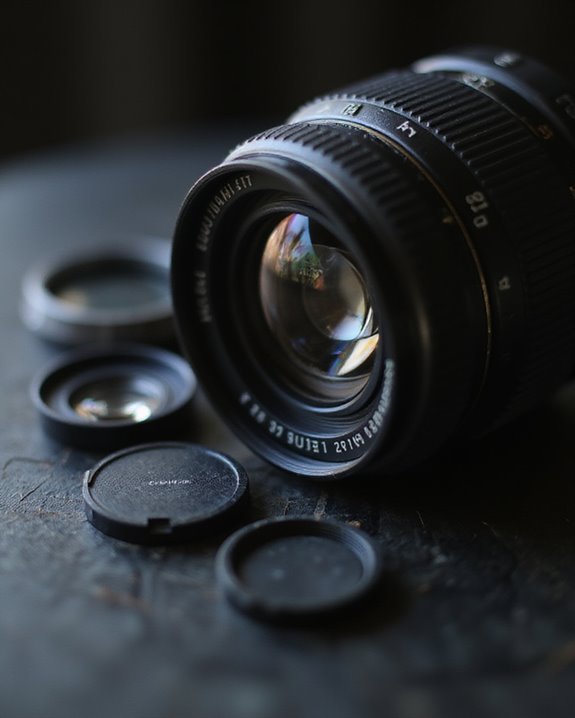
Why do camera lenses perform differently on various camera bodies? The answer lies in sensor size and crop factors. When a lens designed for full-frame cameras is mounted on a camera with a smaller sensor, the resulting image appears more “zoomed in” due to Sensor Ratios that determine the crop factor.
Crop factor is calculated by dividing the diagonal measurement of a full-frame sensor by that of a smaller sensor. This Effective Multiplier changes how focal length translates to field of view, without physically altering the lens itself. For example, a 50mm lens on an APS-C camera with a 1.5x crop factor produces a field of view equivalent to a 75mm lens on a full-frame camera. While aperture remains unchanged, photographers must account for crop factors when selecting lenses to achieve their desired composition.
Prime vs. Zoom Lenses: Focal Length Considerations
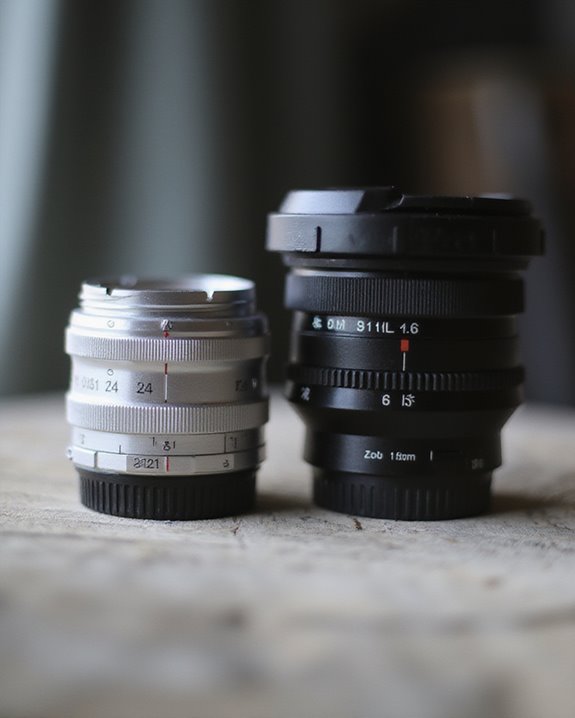
Beyond understanding sensor sizes and crop factors, photographers must consider another fundamental choice in their lens selection: prime versus zoom lenses, which represent two distinct approaches to focal length. Prime lenses offer a single fixed focal length with prime stability, typically delivering superior sharpness, wider maximum apertures (often f/1.4 or f/1.8), and simpler construction that reduces optical aberrations. In contrast, zoom lenses provide zoom variability with a range of focal lengths in one package, allowing photographers to adjust composition without changing position.
The choice involves tradeoffs in optical performance versus convenience, as primes generally excel in image quality and low-light capabilities while remaining more compact, whereas zooms offer practical versatility for dynamic shooting situations. This distinction proves essential when selecting lenses for specific photographic needs, as each type serves different creative and practical purposes.
Portrait Photography: Selecting the Ideal Focal Length
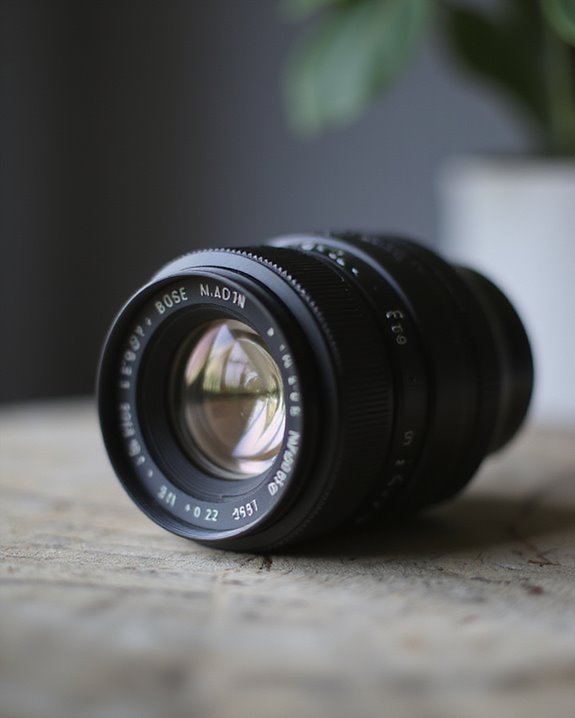
Selecting the ideal focal length for portrait photography dramatically influences both the aesthetic quality and emotional impact of the final image, creating distinct relationships between subject, background, and viewer. Different portrait styles benefit from specific focal length ranges, with headshots typically requiring 85-135mm lenses to minimize facial distortion and produce pleasing Bokeh Effects that isolate subjects from their surroundings. For environmental portraits, wider focal lengths between 24-50mm allow photographers to incorporate contextual elements while maintaining subject prominence.
Photographers must consider how focal length affects perspective, as longer lenses tend to compress features, providing more Flattering Angles, while wider lenses may introduce distortion when used too close to subjects. The technical choice between prime and zoom lenses for portraiture ultimately depends on the desired aesthetic, shooting environment, and creative vision.
Landscape and Architecture: Working With Wide Focal Lengths
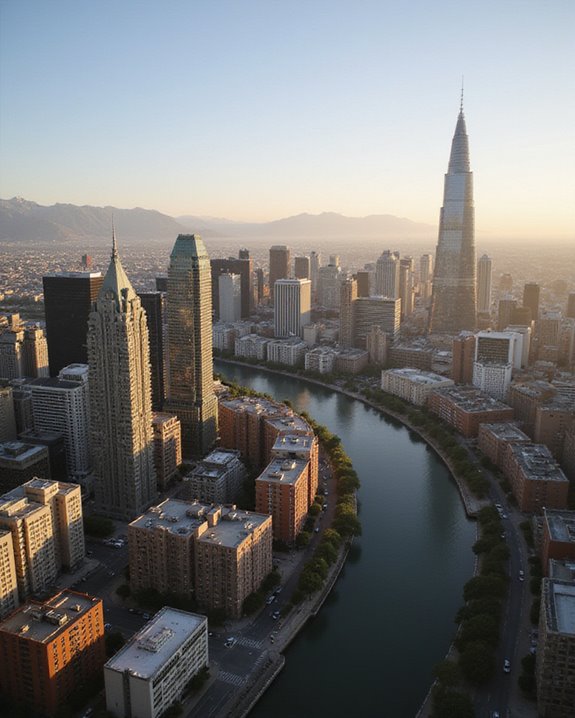
When capturing vast landscapes or towering architectural structures, photographers typically gravitate toward wide focal lengths in the 14-35mm range, which fundamentally transform spatial relationships within the frame. These lenses excel at depth enhancement, stretching the perceived distance between foreground and background elements while maintaining an expansive field of view that encompasses entire mountain ranges or cityscapes.
The ultra-wide range (14-24mm) proves particularly effective for environmental storytelling, allowing photographers to include contextual elements such as weather conditions or human activity alongside primary subjects. Technical considerations include hyperfocal distance calculations to maximize front-to-back sharpness and aperture selection between f/8-f/11 to balance overall detail retention. Architectural photographers must additionally address challenges like converging verticals, which can be mitigated through specialized tilt-shift lenses or post-processing perspective correction tools.
Frequently Asked Questions
Can Focal Length Affect the Flash Power Needed for Proper Exposure?
Focal length creates a dramatic impact on flash coverage, not direct power needs. Flash heads adjust zoom to match lens angles, maintaining exposure balance while distributing flash power appropriately across the frame regardless of mm measurement.
How Does Focusing Distance Impact the Effective Focal Length?
Focusing distance changes effective focal length through focus breathing, where internal lens elements shift, altering angle of view. Closer focusing often increases effective focal length while creating parallax shift in optical relationships between elements.
Do Temperature Changes Affect a Lens’s Focal Length Accuracy?
Metal expands, glass reshapes; thermal stability matters. Temperature fluctuations cause material expansion in lens components, altering focal length accuracy. Precision optics require controlled conditions, as even slight changes can impact image quality greatly.
Can Adapters Change the Effective Focal Length of Vintage Lenses?
Standard adapters maintain the focal length of vintage lenses while enhancing compatibility with modern cameras. However, specialized speed booster adapters can reduce the effective focal length and increase light transmission for improved performance.
How Does Lens Coating Technology Relate to Focal Length Performance?
A stitch in time saves nine. Lens coating innovations primarily enhance focal length performance through aberration reduction, ensuring consistent image quality across different focal distances while minimizing reflections and maximizing light transmission.




